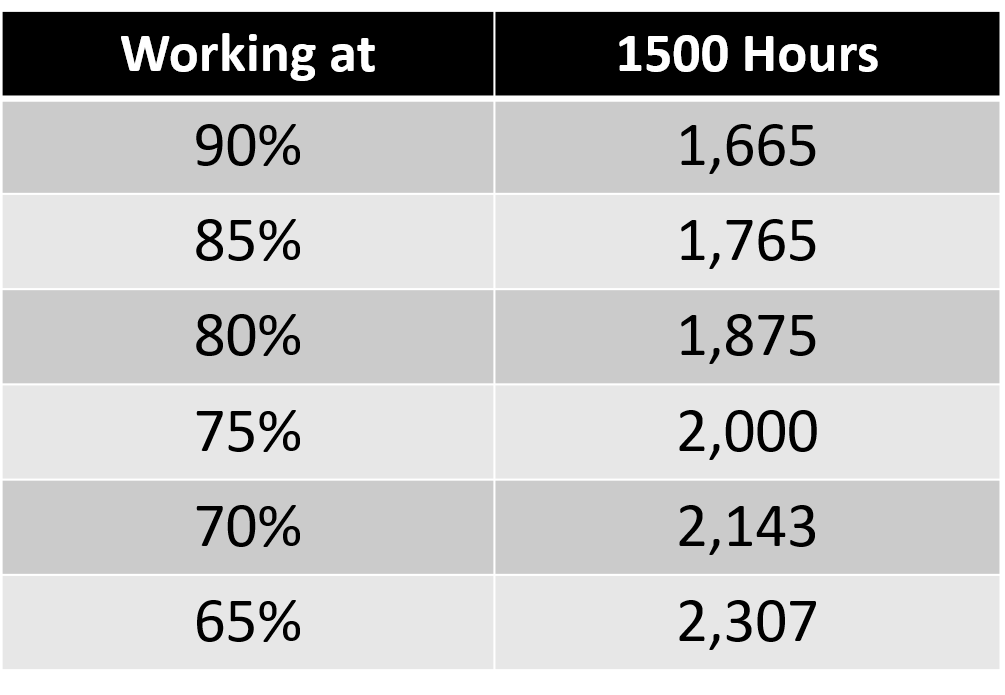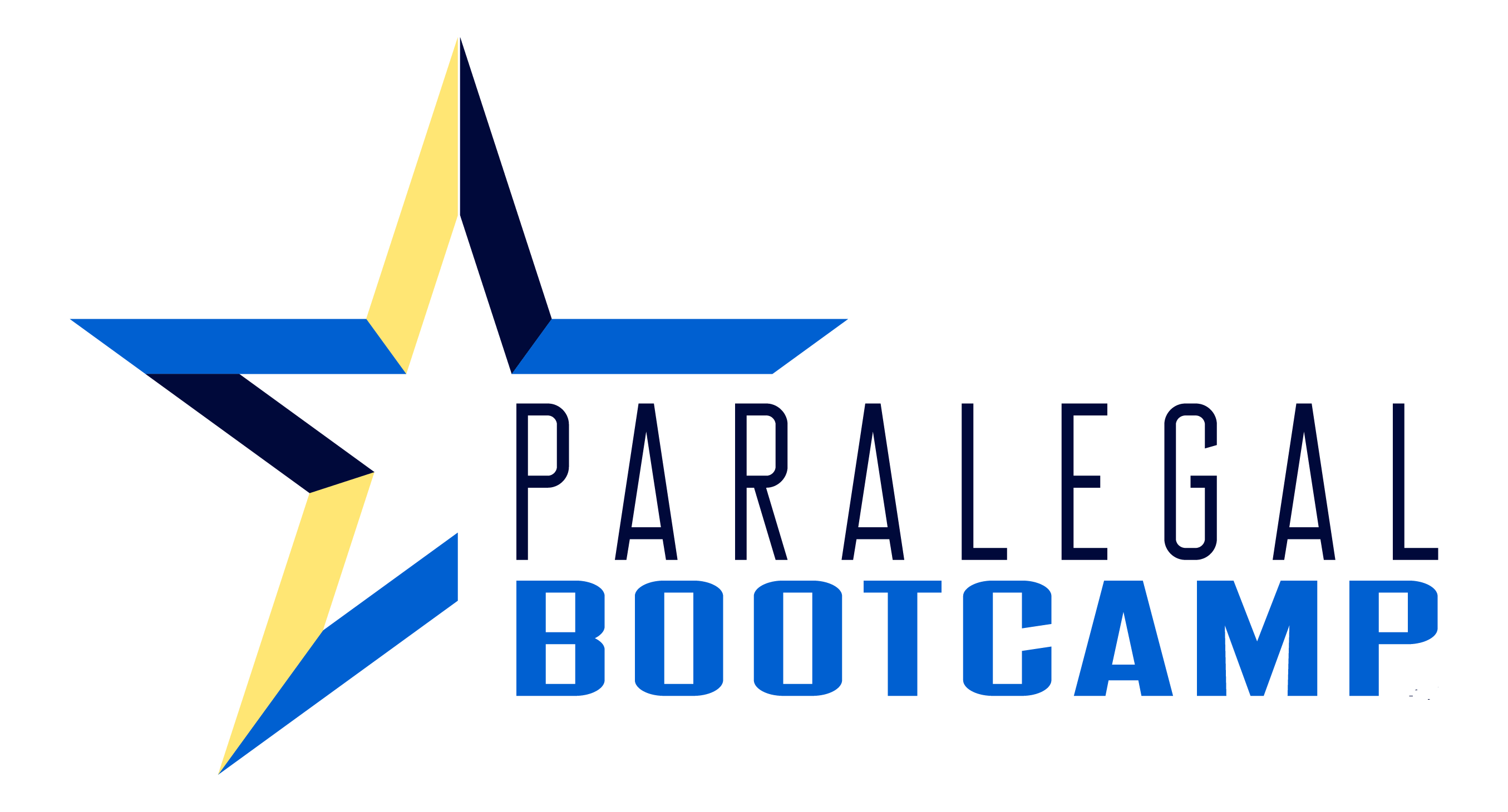Your Paralegals Can Increase Your Law Firm Profitability
As law firms look for ways to stay competitive and profitable, they typically focus on attorney numbers and cutting expenses. While paralegals are usually an overlooked area of law firm profitability, it is an area that law firm managers and legal administrators can have a direct impact on the firm’s bottom line.
The 3 key factors to increase paralegal profitability in a law firm are:
- Paralegal Utilization
- Paralegal Realization
- Paralegal Productivity
Watch this video presentation from Ann Pearson, who teaches the Billable Hour Boot Camp for law firms, a training program to increase billable hours and boost revenue without piling extra work on your timekeepers or raising your hourly billing rates.
Look at an example of a law firm with 20 paralegals:
20 paralegals x $150 average bill rate x 1,500 hours per year = $4,500,000 in potential revenue.
The problem is that the paralegal billable hours usually look more like this:
10 of the paralegals are at 80% or less utilization = 1,200 hours each (3,000 hours less than budgeted)
8 of the paralegals are at 90% or less utilization = 1,350 hours each (1200 hours less than budgeted)
And the remaining 2 of the 20 paralegals at 100% or more utilization = 1,500 hours each
Then some of those hours are written off by the billing partner or not paid by the client.
So, the revenue number looks more like $3,500,000 (or less) instead of $4,500,000. At first glance, it still doesn’t sound so bad because the group brought in over 3 million dollars. What usually gets overlooked is that million-dollar gap between what could have been brought in. Imagine what any law firm, regardless of the size of the firm, could do with an extra million dollars per year!
There are 3 Key Drivers that impact paralegal profitability
-
Paralegal Utilization
-
Paralegal Realization
-
Paralegal Profitability
What is paralegal utilization?
Paralegal utilization is the percentage of time that is entered into the timekeeping system as billable time to a client file, compared to the time that the firm has budgeted for the timekeeper to bill. In other words, how much of the paralegal’s time is being utilized by billable work? It looks like this:
Actual Hours billed of 1200 hours divided into
1,500 Budgeted billable hours = 80% utilization
A law firm is a business that generates revenue from its timekeepers. Imagine if a law firm budgets for 50 timekeepers (paralegals and attorneys) to bill 1,500 hours next year, and every one of them only hits an 80% utilization rate. The result would be 15,000 hours less than the firm budgeted and planned for. 80% doesn’t sound like a bad number for a grade, but when you’re looking at paralegal utilization, you want that number to be at 100% or more.
How can I improve paralegal utilization?
Several factors affect paralegal utilization rates, but there is one easy method that you can implement and see significant improvement right away.
It’s one of many methods inside the Billable Hour Boot Camp, and one that is.
Your timekeepers must enter their billable time into the timekeeping system contemporaneous to doing the work.
Not waiting until the end of the day.
Not waiting until the end of the week.
And definitely not waiting until the end of the month.
Studies show that the longer a timekeeper waits to enter their time, the more time they lose.
If they wait until the end of the day, they lose approximately 10% of their time.
If they wait until the end of the week, they lose approximately 4 hours.
And if they wait until the end of the month, they lose approximately 15 hours.
Imagine if you have 20 paralegals waiting until the end of the day to enter their time. And we know that’s a “best-case scenario” because most firms have a weekly time entry deadline that requires their timekeepers to have all their time from the previous week entered into the system and finalized. These timekeepers might be following the firm’s policies, but the firm is losing billable time with a weekly time entry deadline.
Where does this lost time go? It gets forgotten.
That .1 phone call and that .1 response to an email start adding up throughout the day and especially throughout the week or month.
Even if the timekeeper is “jotting down notes” about their billable time, there’s usually not enough detail. When they go to enter that time, they cut a .1 and .2 from their own time. Either that or the timekeeper spends so much time jotting down all of the detail and then more time entering it into the billing system.
This results in 10% being lost due to all the administrative time spent.

Billable Hour Boot Camp
Increase billable hours and boost revenue for your law firm without piling extra work on your timekeepers, scrambling for new clients, or raising your bill rates.
Ann Pearson walks your team through her Billable Hour Framework, which has been proven to increase billable hours, decrease overtime, and reduce write-offs.
Case Study Example 1 – Increase in Paralegal Utilization
Here’s what you could gain with a group of 20 paralegals who go from entering their time at the end of the day to entering their time contemporaneous with the work:
-
- 10% of 6 billable hours = .6 per day recovered
-
- 20 workdays x .6 = 12 hours per month
-
- 12 hours x 11 months = 132 hours
-
- 20 paralegals x 132 = 2,640 total hours
-
- 2,640 hours x $150/hour = $396,000 gain in revenue if they don’t wait until the end of the day.
As a manager or legal administrator, even if your firm has a weekly or monthly timekeeping deadline, ask your paralegals to input their time while they are doing the work, and you will see an increase in paralegal utilization numbers from all that lost time. And the great thing about this one method is that you don’t even have to ask them to do more work than they’re already doing. You’re just asking them not to lose any of the billable work that they’re already doing.
Billable hours don’t tell the whole story. Not every billable hour is equal.
If someone is billing more hours than normal to complete a project just for the sake of trying to increase their billable hours, then there will be a hit to the remaining key drivers: realization and productivity. This is why all three of these numbers are factors that need to be addressed when you are trying to increase paralegal profitability.
What is paralegal realization?
Paralegal realization is the percentage of recorded time that ends up staying on the bill versus the amount that was entered into the billing system. For example, if $2,000 worth of time is recorded in the billing system, but $500 of that time is later written down by the billing partner, and the client is billed $1,500, then the realization rate on that paralegal’s time is 75%.
Things that could be reducing paralegal realization rates include:
-
- The timekeeper not adequately describing the work that was done, so the billing partner writes off some of the time.
-
- The billing partner needs to do general reductions in the overall bill at the request of the client or to keep the client happy.
-
- Taking longer than necessary to complete a task or project.
Case Study Example 2 – Increase in Paralegal Realization
Looking at our group of 20 paralegals again, let’s assume they’re at approximately 90% realization, and you could decrease just a .5 write-off per month.
-
- .5 per month x 12 = 60 hours per year
-
- 20 paralegals x 60 = 1200 hours total
-
- 1,200 hours x $150/hour = $180,000 gain in revenue from reduced write-offs
How can I improve paralegal realization rates?
The best way to increase paralegal realization rates is to make sure paralegals know how to draft time entries that show the real value of the work they did. This is not about adding more words to the time entry to “fluff it up” or make the time entry look longer.
The method that makes it easy to show the real value is to look at every single time entry and ask a few of the journalism questions that are considered to be the basic information of telling a complete story. That’s what monthly time entries on a bill should do: tell the client a complete story about what happened on their file last month.
What is paralegal productivity?
Paralegal productivity is the percentage of time spent on billable work compared to the total hours worked (not paid). You can measure this by dividing hours billed into hours worked (not paid hours, just worked hours). In other words, if a paralegal leaves a couple of hours early for a doctor’s appointment, they might only work 6 hours, but they use 2 hours of PTO and are paid for 8 hours that day. If they billed 5 hours that day, the calculation would look like this:
5 divided into 6 = .83 or 83% of the time they worked that day was billed to a client file.
Paralegal productivity is an important number to measure because it affects overtime and overall paralegal profitability numbers. It also can lead to excessive overtime hours and paralegal burnout.
For example:
Paralegal A and Paralegal B both have a 1,500 billable-hour quota to meet.
Paralegal A, working at 90% productivity, will meet that 1,500 billable-hour quota in 1,665 work hours.
Paralegal B, working at 75% productivity, will meet that 1,500 billable-hour quota in 2,000 work hours.
That means that Paralegal B is working 335 more hours per year to do the same amount of work as Paralegal A. Most of those hours are probably being worked at an overtime pay rate, which brings down profitability even more.
What could a 10% increase in productivity look like for your team?
Look at what just a 10% increase could mean:

How can I improve paralegal productivity?
We discuss many methods for improving paralegal time management in our Billable Hour Boot Camp. One of those methods we discuss that will give someone a boost in daily productivity is to ask your paralegals to start tracking their daily numbers.
If you’ve ever been on a diet or just trying to eat a little healthier, you know this works. If you’re tracking what you eat each day, you’re less likely to have a donut and a milkshake for breakfast. You want to feel that reward of looking back at your daily food log and seeing the healthy choices you made.
It is the same thing as working out. Every fitness coach will tell you – if you want to see progress and stick to your fitness plan, start tracking your workouts. When you’re tracking your workouts, you’re more likely to exercise so that you can see that gratification each day.
Case Study Example 3 – Improved Paralegal Productivity
Back to our group of 20 paralegals, let’s assume you could increase their daily productivity number by just 5%. That’s a very small but doable increase. To go from 75% to 80% would mean an increase of 125 hours per year.
-
- 125 hours per year x 20 = 2,500 hours
-
- 2,500 hours x $150/hour = $375,000 gain from a small increase in productivity
Another method to increase your team’s productivity is to provide law firm staff training that increases paralegal skills. Are the paralegals using Microsoft Word, Excel, and Adobe at a level that utilizes the power of those technologies? If they are in litigation, are they more than just “comfortable” with eDiscovery?
Final Results on Increasing Paralegal Profitability
In our hypothetical case study, we have 20 paralegals and we have addressed all of the 3 key drivers of paralegal profitability. What might the results look like?
| Increase In | Method | Gain/Result for 20 Paralegals |
| Paralegal Utilization | Enter time right away | $396,000 |
| Paralegal Realization | Draft better time entries | $180,000 |
| Paralegal Productivity | Track daily productivity | $375,000 |
| Total | $951,000 |
That’s a gain of $951,000 for just 20 paralegals and just implementing one method for each of the three key factors of paralegal profitability. Imagine if you have 40 paralegals. Or 80 paralegals. As a paralegal manager or legal administrator, you could significantly impact the firm’s bottom line.
Finally, if you want to see a bigger impact on paralegal profitability, provide training for paralegals so that they understand their role as a timekeeper in the firm. Many paralegals, especially those just starting their paralegal career, don’t fully understand that it is part of their job duties. Make it part of the paralegal’s job description so that it’s clear to them that billing for their time is an important part of their job.
Billable Hour Boot Camp
Live webinar series starts on September 23, 2025!
The billable hour course and coaching program to help law firm timekeepers:
✅ Exceed their annual billable targets
✅ Reduce their stress related to billable hours
✅ Write better time entries and reduce write-offs
✅ Get more work done in less time so that they have a better work/life balance
For the only time this year, we’re going live for a 5-part webinar series.
Join Ann Pearson as she gives you practical strategies, real-time coaching, and results-driven insights that you can apply immediately.
SEATS ARE LIMITED! Get yours before the doors close.

Free webinar for managers and attorneys
Want to uncover even more ways your law firm could be leaving money on the table? If you’ve found these 3 key factors insightful, don’t miss the next step: a short, but powerful, video that walks you through 6 Billable Hour Mistakes That Could Be Costing Your Law Firm Money.
Tips and resources to share with your paralegals about billable hours
Meet the Author

Ann Pearson is the Founder of the Paralegal Boot Camp, and host of the Paralegals on Fire! Podcast Show, and passionate about promoting the paralegal profession.
Ann spent 20 years working as a paralegal manager and a litigation paralegal before opening the Paralegal Boot Camp in 2010.
Ann’s training programs focus on adding immediate value to a paralegal’s career and bridging the gap between what a paralegal learns in school and what they actually do on the job.
Visit the About Us Page to learn more about why Ann started the Paralegal Boot Camp.
